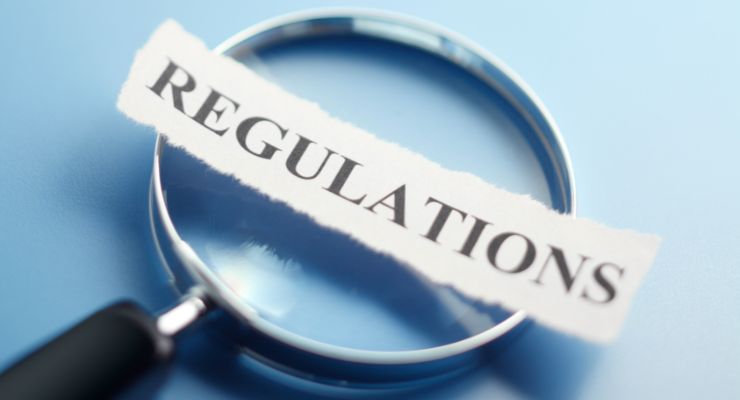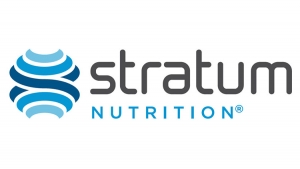By Joerg Gruenwald, analyze & realize GmbH01.20.23
In the EU, the new Medical Devices Regulation (EU) 2017/745 (MDR) entered into force in May 2017, replacing the old Medical Device Directive (MDD; 93/42/EEC medical devices).
This action entailed major changes for the majority of the self-certified former CE class I medical devices, which are now assigned higher risk classes. It applies also for substance-based devices such as nasal sprays, throat lozenges, topical products, and many others. The European Parliament approved an extension of the re-certification period until May 26, 2024.
A similar situation exists for in vitro diagnostic medical devices (IVD). These products are designed for testing of human samples (such as salvia, blood, urine, feces, or tissues) outside the body to provide information on a person’s health or physiological state. Until 2017, IVDs were regulated by the Directive 98/79/EC on in vitro diagnostic medical devices (IVDD). In May 2017, the new Regulation (EU) 2017/746 on in vitro diagnostic medical devices (IVDR) came into force.
The IVDD-to-IVDR transition period ended in May 2022, and like for medical devices, there will be a further grace period for certain devices until May 2024.
For a period of 3 years following the entry into force of the MDR, manufacturers could decide to certify their products either under the new MDR or under the old MDD. However, since May 2020, this is no longer possible. All medical devices now require new certification by a Notified Body (NB). Nonetheless, NBs can only certify for the MDR after they have been designated for it.
The lack of certified NBs is a bottleneck for the certification of new medical devices (and re-certification of existing devices that were originally certified under the old legislation), which means that those medical devices whose manufacturers are unable to find a Notified Body will have to be withdrawn from the market at the end of the transitional period.
The same is true for devices certified under implementation of the IVDR, where there are even fewer Notified Bodies available than for the MDR.
In order to prevent this, several industry associations called for an extension of the transitional period. In October 2022, the German Bundesrat urgently appealed to the German Federal Government to clearly and vehemently advocate at the EU level for improvements in the implementation of the EU MDR and the IVDR.
The resolution proposes reasonable measures to ensure adequate patient care after May 2024. Measures include immediate solutions for orphan products, simplified implementation for legacy devices, more capacity for as well as more Notified Bodies, and a call on the EU Commission to consider extending the implementation period in order to lessen the certification bottleneck.
For devices with a higher risk class (class III and Class IIb), the proposed extension is until 2027, while lower risk class devices—of which there are many more on the market—may expect an extension until 2028.
MDD device certificates of legacy devices are planned to be valid at least until the respective certificate’s expiration date. Under certain conditions, the validity can be extended. These conditions include no unacceptable risk to health and safety posed by the device, and no significant changes in its design or intended purpose. Also, manufacturers must have adapted their quality management system to MDR, and their application for conformity assessment must have been accepted by a Notified Body.
MD manufacturers are now awaiting the outcome of the legislative proposal to the European Parliament, which is expected to be provided by the European Commission in early 2023.
In any case, food and business operators that still have legacy devices registered under the old MDD on the market should speedily upgrade their documentation to MDR.
This requires the realization of selected legal requirements which are new and most challenging for manufacturers of MDD class I devices. It entails acquiring relevant clinical data to prove the performance and safety of the device. Also, there are new fundamental requirements regarding implementation and running of the Post-Market Surveillance and vigilance system. Experienced consultancies such as analyze & realize GmbH stand ready to assist.
About the Author: Dr. Joerg Gruenwald is co-founder of analyze & realize GmbH, a specialized business consulting company and CRO in the fields of nutraceuticals, dietary supplements, herbals and functional food, and author of the PDR for Herbal Medicines. He can be reached at analyze & realize GmbH, Waldseeweg 6, 13467 Berlin, Germany; +49-30-40008100; jgruenwald@a-r.com.
This action entailed major changes for the majority of the self-certified former CE class I medical devices, which are now assigned higher risk classes. It applies also for substance-based devices such as nasal sprays, throat lozenges, topical products, and many others. The European Parliament approved an extension of the re-certification period until May 26, 2024.
A similar situation exists for in vitro diagnostic medical devices (IVD). These products are designed for testing of human samples (such as salvia, blood, urine, feces, or tissues) outside the body to provide information on a person’s health or physiological state. Until 2017, IVDs were regulated by the Directive 98/79/EC on in vitro diagnostic medical devices (IVDD). In May 2017, the new Regulation (EU) 2017/746 on in vitro diagnostic medical devices (IVDR) came into force.
The IVDD-to-IVDR transition period ended in May 2022, and like for medical devices, there will be a further grace period for certain devices until May 2024.
For a period of 3 years following the entry into force of the MDR, manufacturers could decide to certify their products either under the new MDR or under the old MDD. However, since May 2020, this is no longer possible. All medical devices now require new certification by a Notified Body (NB). Nonetheless, NBs can only certify for the MDR after they have been designated for it.
Shortage of Notified Bodies Leads to Bottlenecks
However, it has been obvious since 2019 that there are not enough Notified Bodies to carry out the certification, considering the number of existing medical devices in relation to the number of Notified Bodies. In the EU, there are 33 Notified Bodies designated for the MDR and only seven Notified Bodies designated for the IVDR. This illustrates the need for Notified Bodies.The lack of certified NBs is a bottleneck for the certification of new medical devices (and re-certification of existing devices that were originally certified under the old legislation), which means that those medical devices whose manufacturers are unable to find a Notified Body will have to be withdrawn from the market at the end of the transitional period.
The same is true for devices certified under implementation of the IVDR, where there are even fewer Notified Bodies available than for the MDR.
Real Implications for Patient Care
This is not a trivial problem; many medical devices are vital parts of patient care, and a lack of them would endanger successful treatments and even lives.In order to prevent this, several industry associations called for an extension of the transitional period. In October 2022, the German Bundesrat urgently appealed to the German Federal Government to clearly and vehemently advocate at the EU level for improvements in the implementation of the EU MDR and the IVDR.
The resolution proposes reasonable measures to ensure adequate patient care after May 2024. Measures include immediate solutions for orphan products, simplified implementation for legacy devices, more capacity for as well as more Notified Bodies, and a call on the EU Commission to consider extending the implementation period in order to lessen the certification bottleneck.
Proposed Action
On Dec. 9, 2022 the European Commission finally proposed a further extension of the MDR transition period during the EPSCO meeting in Brussels.For devices with a higher risk class (class III and Class IIb), the proposed extension is until 2027, while lower risk class devices—of which there are many more on the market—may expect an extension until 2028.
MDD device certificates of legacy devices are planned to be valid at least until the respective certificate’s expiration date. Under certain conditions, the validity can be extended. These conditions include no unacceptable risk to health and safety posed by the device, and no significant changes in its design or intended purpose. Also, manufacturers must have adapted their quality management system to MDR, and their application for conformity assessment must have been accepted by a Notified Body.
MD manufacturers are now awaiting the outcome of the legislative proposal to the European Parliament, which is expected to be provided by the European Commission in early 2023.
In any case, food and business operators that still have legacy devices registered under the old MDD on the market should speedily upgrade their documentation to MDR.
This requires the realization of selected legal requirements which are new and most challenging for manufacturers of MDD class I devices. It entails acquiring relevant clinical data to prove the performance and safety of the device. Also, there are new fundamental requirements regarding implementation and running of the Post-Market Surveillance and vigilance system. Experienced consultancies such as analyze & realize GmbH stand ready to assist.
About the Author: Dr. Joerg Gruenwald is co-founder of analyze & realize GmbH, a specialized business consulting company and CRO in the fields of nutraceuticals, dietary supplements, herbals and functional food, and author of the PDR for Herbal Medicines. He can be reached at analyze & realize GmbH, Waldseeweg 6, 13467 Berlin, Germany; +49-30-40008100; jgruenwald@a-r.com.


























